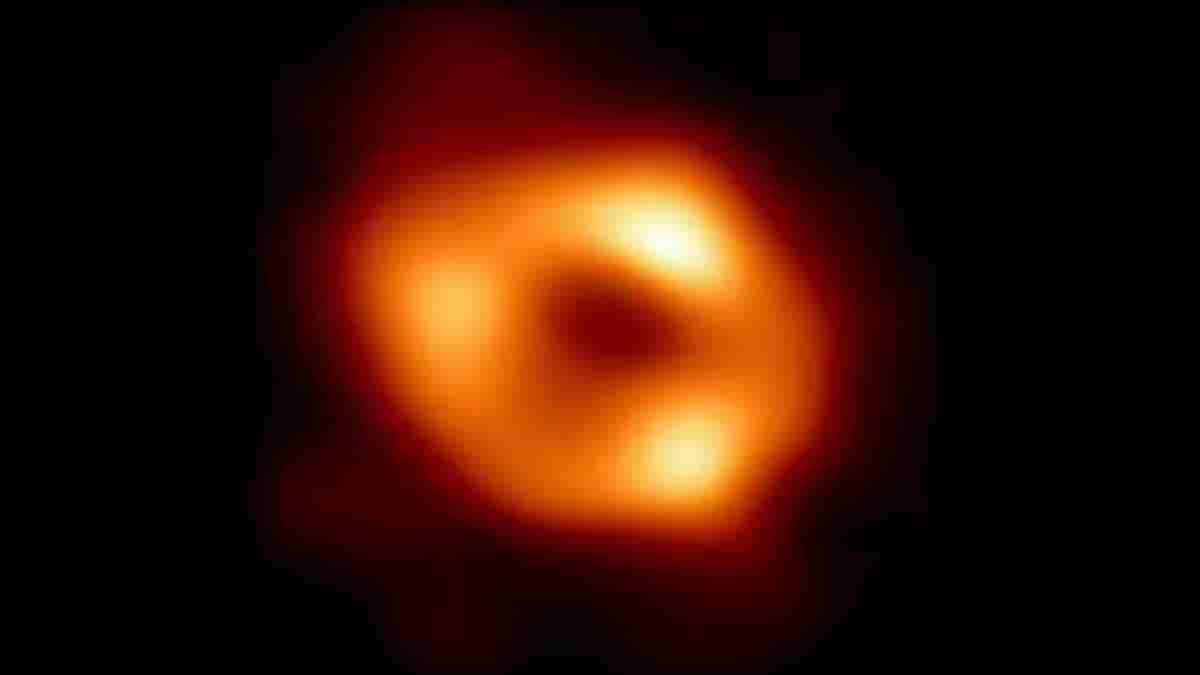The Milky Way Galaxy’s black hole: Sagittarius A, its size and much more

You’ve all probably heard about the Milky Way Galaxy. You might be aware about it’s existence. If not take note that, our Solar System exists as a part of the Milky Way Galaxy. If you need to go back a little more, a Galaxy is a system of stars, stellar remnants, interstellar gas, dust and dark matter. The name Milky Way comes from the way it appears from the Earth.
Secondly, you might be aware of the term Black Hole. Black Hole refers to a region of spacetime with a very high gravitational pull exists. It’s a space from which no particles or even electromagnetic radiation such as light can escape. The Black Hole acts like an ideal black body, as it doesn’t facilitate any reflection of light. After the formation of a black hole it can grow by acquiring mass from its surroundings.
The Milky Way Galaxy has a Black Hole of its own. It is called “Sagittarius A”. The Sagittarius A is located around the border of the constellations Sagittarius and Scorpius, at about 5.6 degree south to the ecliptic.
In the April month of the year 1933, Karl Jansky, father of radio astronomy discovered a radio signal travelling from a location where the constellation Sagittarius exist. Later, Jack Piddington and Harry Minnett discovered a more discreet and bright “Sagittarus-Scorpius” radio source. Later it was identified as the now Galactic Center. Karl Jansky’s observations did not extend too far in the south to reach what we now know as the Galactic Center.
Astronomers and researches started drawing evidence by the 1980s that the central component of Sagittarius A is likely a black hole. Two teams of astronomers tracked the star motions near the previously discovered radio waves. They discovered stars whirling around a dark object with a pace of up to a third of light’s speed. This motion led to assumptions that the center of the Milky Way constitutes of a black hole 4 million times the mass of the sun. Reinhard Genze and Andrea Ghez received the Nobel Prize in Physics (shared) for this discovery.
To determine the size of the black hole scientists had to consider the event horizon of the black hole. It is the distance from the center of the black hole, within whose vicinity nothing can escape. Previously, scientists calculated the size of the Sagittarius A black hole to be 16 million miles in diameter, i.e., 26 million kilometers.
The Sagittarius A black hole is much bigger than the black holes left behind after massive stars die. However, astronomers are also of the view that supermassive black holes exist at the center of almost all galaxies. Compared to them, they states that the Sagittarius A is smaller and unremarkable.
Humans received the first image of the Sagittarius A on May 12, 2022. The Event Horizon Telescope Collaboration released the image. The image is based on radio interferometer data from 2017. This data confirms the presence of the black hole.
The announcement about conclusive evidence that Sagittarius A is a black hole was done on October 32, 2018 with a paper publication.


